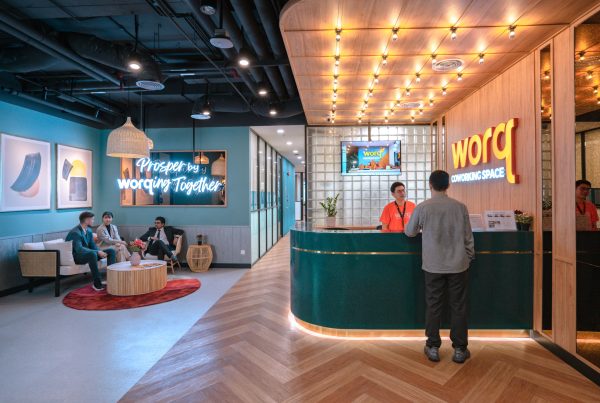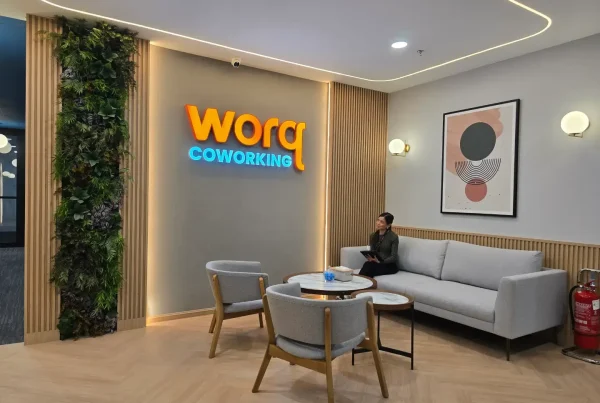Introduction
In today’s rapidly evolving economic landscape, understanding the factors that influence the real estate market and interest rates is more crucial than ever. One such factor that often goes unnoticed but has a profound impact is interest rates. Whether you’re an entrepreneur looking for a flexible workspace or a business owner considering expanding into co-working spaces, the current interest rate environment can significantly affect your decisions.
As we navigate these complex economic waters, it’s essential to rely on credible insights to make informed choices. That’s why this blog post will draw from the JLL’s Global Real Estate Perspective for August 2023, a comprehensive report that delves into the nuances of the global real estate market, including the impact of interest rates.
Stay with us as we explore how interest rates are shaping the co-working space industry and what it means for you.
The Current State of Interest Rates

The current economic climate is marked by a series of fluctuations, and one of the most significant factors affecting businesses and real estate is the state of interest rates. According to the JLL’s Global Real Estate Perspective for August 2023, interest rates are expected to remain higher for longer. This trend has far-reaching implications for various sectors, including the co-working space industry.
But what does this mean in the context of the Federal Reserve’s policies? The Federal Reserve, through its Open Market Operations, plays a pivotal role in setting interest rates. These rates influence borrowing costs for businesses and consumers alike. It generally means higher costs of borrowing, which can affect the profitability and expansion plans of co-working spaces.
In a higher interest rate environment, co-working spaces may face challenges in terms of expansion and operational costs. The cost of leasing or purchasing real estate properties would be higher, affecting the overall business model. On the flip side, higher interest rates could also mean that traditional office spaces become more expensive, making co-working spaces a more attractive option for freelancers and companies looking to cut costs. Learn more about how rising interest rates and inflation impact real estate investments from Forbes.
How Interest Rates Affect the Real Estate Market

Interest rates are a critical factor that can make or break the real estate market. They influence not just the cost of borrowing but also the investment decisions of both individual and institutional investors. Let’s delve into how interest rates generally affect real estate investments and property values, and what this means for the co-working space industry.
Impact on Investments
Higher interest rates typically result in higher mortgage rates, which can deter both individual buyers and real estate investors from purchasing properties. This can lead to a slowdown in real estate investment activity, affecting the liquidity and overall health of the market. For co-working spaces, this could mean fewer opportunities to expand into new locations due to reduced investment flows.
Impact on Property Values
Interest rates have an inverse relationship with property values. When interest rates rise, the cost of borrowing increases, leading to a decrease in property values. This is because higher interest rates can reduce the number of qualified buyers, leading to less competition and lower prices. For co-working spaces, this could result in lower leasing or purchasing costs, but it could also mean a potential decrease in the value of properties they already own.
The Investopedia Perspective
According to Investopedia, interest rates can significantly affect property values through their impact on the capitalization rate, a metric used in real estate to evaluate the potential return on an investment. Itcan lead to higher capitalization rates, making real estate investments less attractive. This perspective aligns with the general sentiment that rising interest rates can slow down investment activity, which is crucial for co-working spaces looking to expand or diversify their property portfolios.
Direct Impact on Co-working Spaces

In a world where interest rates are more than just numbers on a financial news ticker, understanding their direct impact on co-working spaces is crucial. It can have a domino effect that touches various aspects of a coworking business, from expansion plans to customer demand. Let’s explore these impacts in detail.
Cost of Capital for Expansion or Renovation
One of the most immediate effects of higher interest rates is the increased cost of capital. Whether a co-working space is looking to expand by opening new locations or renovating existing ones, higher interest rates mean higher borrowing costs. This can make loans and financing options less attractive, potentially slowing down expansion plans. For businesses that rely on external funding, this could mean a reevaluation of their growth strategies to account for these increased costs.
Potential Decrease in Demand
Higher interest rates don’t just affect the supply side; they also have implications for demand. Companies, especially smaller startups and freelancers who are more sensitive to economic fluctuations, might cut costs in a high-interest-rate environment. This could lead to downsizing or even the elimination of co-working space memberships as companies opt for more cost-effective solutions like remote work. The result could be a decrease in occupancy rates for co-working spaces, affecting their revenue streams.
The Balancing Act
While higher interest rates pose challenges, they also offer an opportunity for co-working spaces to differentiate themselves. By offering flexible pricing models, value-added services, or even partnerships with financial institutions for better loan rates, co-working spaces can mitigate some of the negative impacts of higher interest rates. Additionally, focusing on retention strategies and promotional efforts can further enhance their appeal in such an environment.
Indirect Impact on Co-working Spaces

While the direct effects on co-working spaces are relatively straightforward, the indirect impacts are more nuanced but equally important. These ripple effects can manifest in various sectors that are intrinsically linked to the co-working industry, such as retail and housing. Let’s delve into how these sectors are affected by it and what it means for co-working spaces.
Impact on Retail Sector
Higher interest rates often lead to reduced consumer spending as the cost of borrowing rises and disposable income shrinks. This can have a cascading effect on the retail sector, leading to lower footfall in shopping centers and high-street locations. Co-working spaces situated in these retail environments may experience a decline in visibility and, consequently, new member sign-ups. The reduced consumer spending could also affect retail businesses that might be potential tenants in co-working spaces, leading to lower occupancy rates, affecting their revenue streams.
Impact on Living Sector
On the flip side, higher interest rates can exacerbate existing housing shortages by making mortgages more expensive and less accessible for the average consumer. This can lead to an increased demand for flexible living arrangements, including co-living spaces or flexible workspaces close to residential areas. Co-working spaces can capitalize on this by offering solutions that cater to this specific demographic, such as workspaces with residential amenities or partnerships with co-living spaces.
The Silver Lining
While the indirect impacts pose challenges, they also open doors for innovation and adaptation. Co-working spaces can use these market shifts as an opportunity to diversify their offerings and cater to new customer segments. For example, a co-working space in a retail location could pivot to offer more B2B services that are less dependent on consumer footfall. Similarly, spaces near residential areas could offer packages that combine work and living solutions, making life easier for those affected by the housing crunch.
Conclusion
As we’ve navigated through the complexities of how interest rates impact the co-working space industry, it’s clear that this is a multifaceted issue with both direct and indirect effects. From the increased cost of capital affecting expansion and renovation plans to the potential decrease in demand as companies look to cut costs, the implications are far-reaching. Moreover, the ripple effects on related sectors like retail and housing further underscore the intricate relationship between interest rates and co-working spaces.
Understanding the impact of interest rates is not just a matter of financial literacy; it’s a strategic necessity for anyone involved in the co-working industry. Whether you’re an investor, a business owner, or even a freelancer looking for a flexible workspace, being aware of how it affect your choices can make a significant difference in your decision-making process.
In a world where economic conditions are ever-changing, knowledge is power. And in the context of co-working spaces, understanding that can equip you with the power to make informed, strategic decisions that not only mitigate risks but also seize new opportunities.





